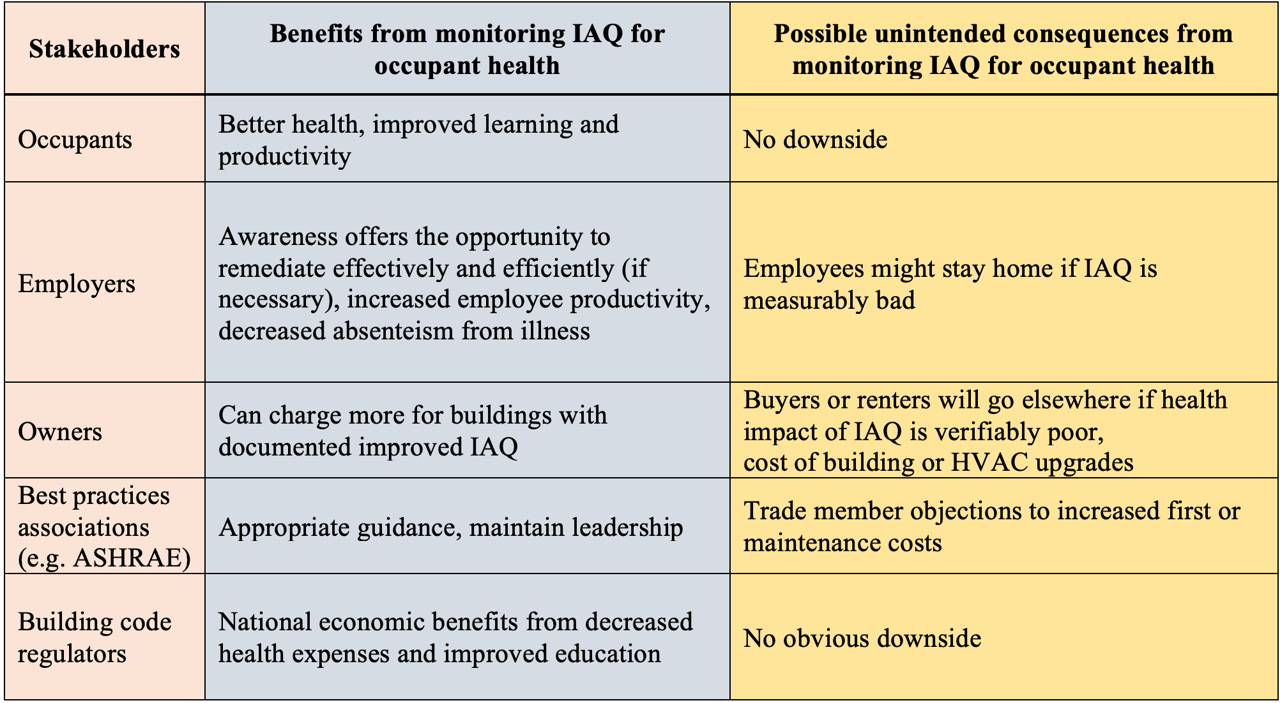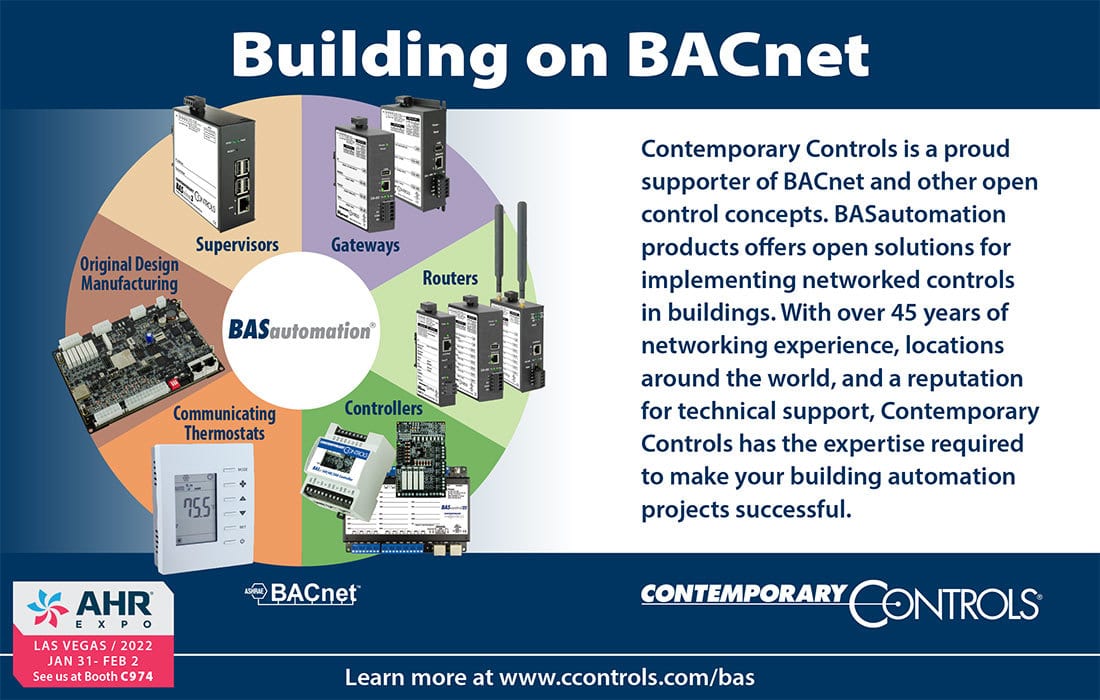
Building Health: A Physician’s View
The Pros of Understanding the Health Impact of IAQ Far Outweigh the Cons
The need to monitor and manage IAQ from the perspective of human health is imperative.
SCROLL
COVID-19 outbreaks have clarified, without a doubt, the essential role of the indoor environment. The pandemic has brought forth the importance of indoor air quality (IAQ) and its role in influencing the transmission of airborne viruses. In addition to viruses, humans are also powerfully affected by IAQ. We know thermal conditions, indoor gases, and particles can either support or undermine our immune systems, skin function, cognitive abilities, and overall sense of well-being. Given these known relationships between IAQ and health, why does the real estate industry continue to focus almost exclusively on the health impact of outdoor air pollution?
The relationship between occupant health and IAQ is undeniably complex. Nevertheless, there is an abundance of medical research that clearly ties good IAQ to healthy, more productive occupants. Advances in monitoring technologies allow us to collect data, which, with proper analysis, can show the real-time impact of IAQ on human physiology in all occupied spaces. Despite these resources, there is still tremendous hesitation to monitor and report real-time IAQ data that relates to human health and productivity.
Data Driven Approach
Why is a data-driven approach to managing IAQ for health not more of a priority, and how can we change this?
Regarding the management of IAQ and its role in occupant health, there are several obstacles complicating the use of medical data as a guide. Building owners and investors typically analyze building activity through the lens of return on investment (ROI). The U.S. Green Building Council's (USGBC's) Leadership in Energy and Environmental Design (LEED) certification has the advantage of producing measurable energy savings, in addition to other benefits, and could, therefore, show incremental, quantifiable returns. Can the same be said for measuring IAQ when the health benefits, productivity increases, and rises in confidence are more difficult to model, seeing that they may take more time to manifest? The answer is “yes.” COVID-19, and the various theories on SARS-CoV-2 spread, has highlighted the awareness of the importance of indoor conditions. Labor shortages and the shift toward remote working remain obstacles for getting people back to on-site work. Teachers remain wary of returning to in-person instruction, and the news increasingly features stories of mothers immersed in discussions with local school boards about the safety and education of their children. Investing in technologies to manage IAQ will therefore differentiate and reward the owners, investors, and municipalities who take the lead in implementing forward-thinking health strategies.
The fear of the unknown, or apprehension about the possibility of low scores with an ability to improve conditions, is yet another reason people are reticent to monitor the health impact of IAQ. In layman’s terms, this premise is similar to avoiding a doctor, because, if you’re sick, you’d rather not know how dire the situation is. You'd rather solemnly hope for the best.
Most of us recognize avoidance is not a winning strategy. Plus, it overlooks the benefits of a proactive approach. People spend 90% of their time indoors. This includes office workers, seniors in retirement communities, students, and virtually everyone else. Occupants and their supporters are not going to simply ignore what we now know and can measure. It’s not realistic to assume they will.
Furthermore, implementing efficient and cost-effective IAQ remediation requires an understanding of a building’s current conditions. Going back to the doctor analogy, you can’t treat what hasn’t been diagnosed. Real-time monitoring reveals targeted remediation opportunities, giving real estate operators the ability to create a better outcome for their occupants and bottom lines. Problems with IAQ can often relate to activities as simple as cleaning solutions and protocols, but ,without measurements, one simply doesn’t know.
The need to monitor and manage IAQ from the perspective of human health is imperative. Creating safe spaces should not entirely depend on isolating practices, such as the 6-foot social distancing rule and requiring face masks.
When it comes to the optimization of indoor spaces, one clear example is the need to include socialization in our schools. Even polarized political parties agree, our children need and deserve good educations — for their personal outcomes as well as for our country to remain a leader in a competitive world. In addition to skilled teachers, engaging school curriculae, nutritious meals, and home life stability, students need peer interactions and pollutant-free air to think and learn. The correlation between a health-supporting indoor environment and student achievement is well-documented. Parents, students, and teachers should no longer tolerate a “bury our heads in the sand” attitude about the health impact of IAQ.

Table 1: The pros and cons of monitoring IAQ for occupant health from different stakeholders’ perspectives.
Steps to Make Indoor Health More Visible and Productive
- Continuously measure indoor gases, particles, temperature, and humidity relevant to human physiology and brain functioning;
- Calculate a composite health impact score of individual and interacting airborne compounds in the context of sensible and latent heat loads;
- If the health impact score is suboptimal, follow targeted steps to adjust outdoor air intake, mechanical systems, and thermal conditions to improve the health score;
- Monitor continuously to confirm beneficial response to the remediation steps; and
- Create real-time, understandable, and actionable dashboards to assure building owners and occupants that their indoor spaces are optimized for health and productivity.
In summary, the health and financial benefits of understanding and managing IAQ from the viewpoint of human health are huge. Students have improved learning, businesses have more present and productive employees, senior living communities have fewer transfers to acute care hospitals, hospitals have fewer iatrogenic infections, and, at home, we sleep more soundly. In addition, the efficacy of steps, such as increasing outdoor air fractions, filtration, humidification, and other interventions, aimed to improve IAQ can be verified and implemented in the most efficient manner. We need not wait any longer to create indoor spaces that truly support health and productivity. The real estate industry needs to recognize the essential manner of proper IAQ as a marketplace that will reward those who seek to address what is increasingly a mainstream issue.

